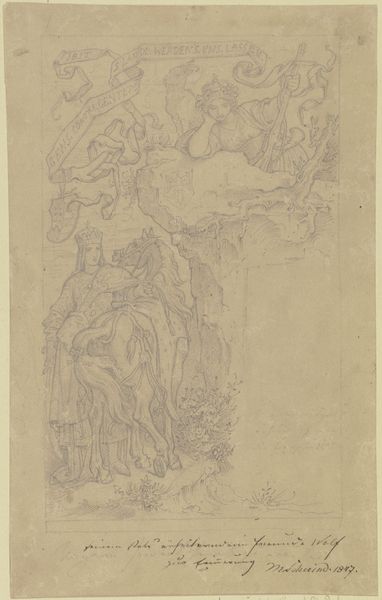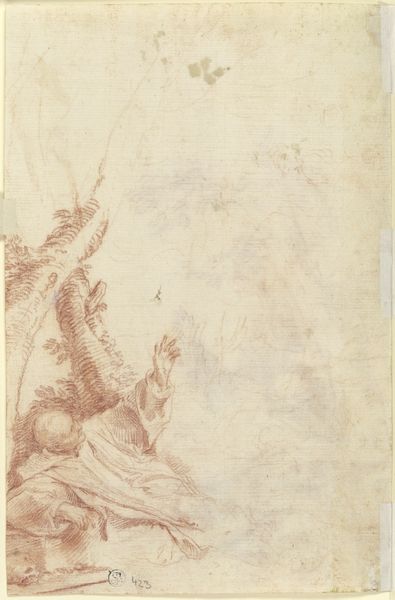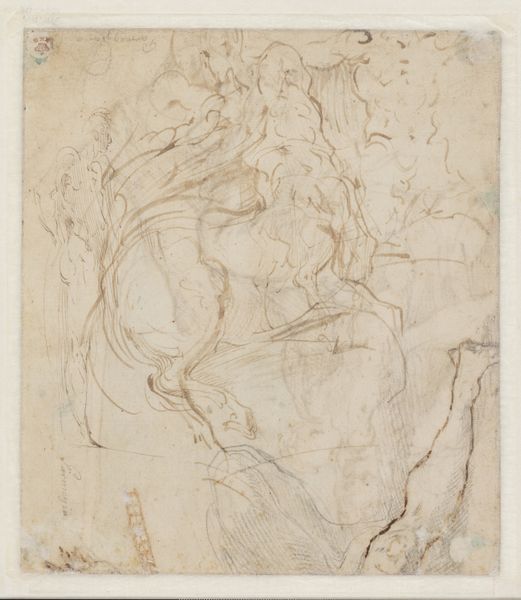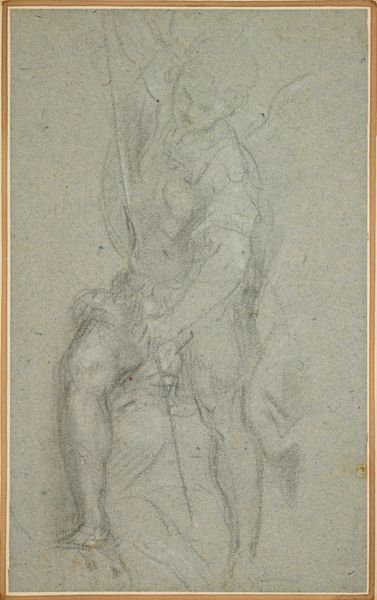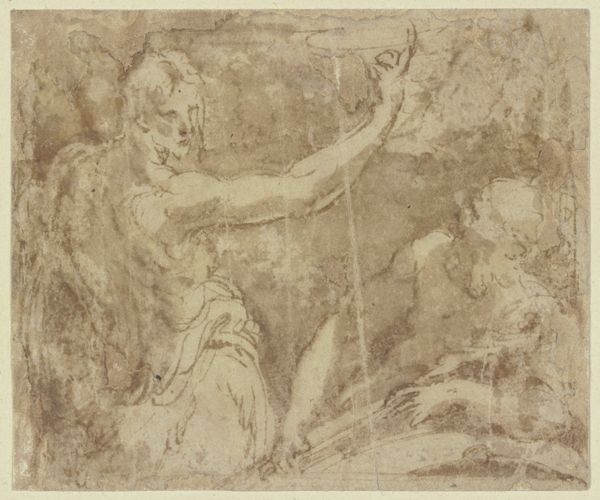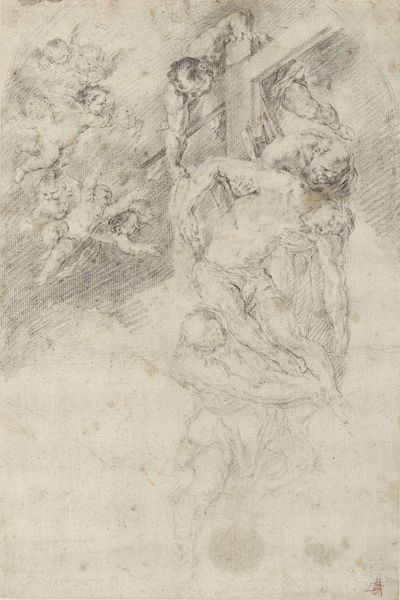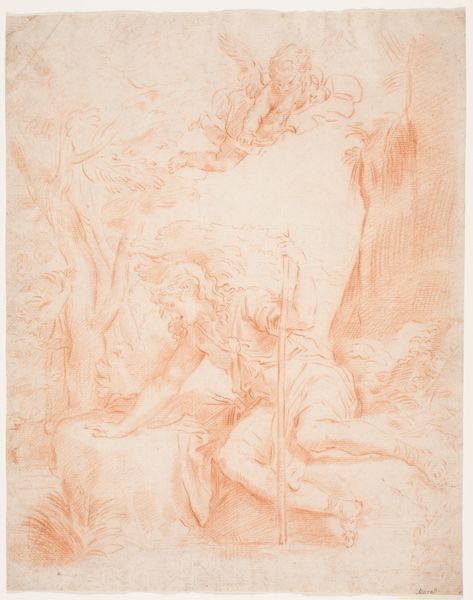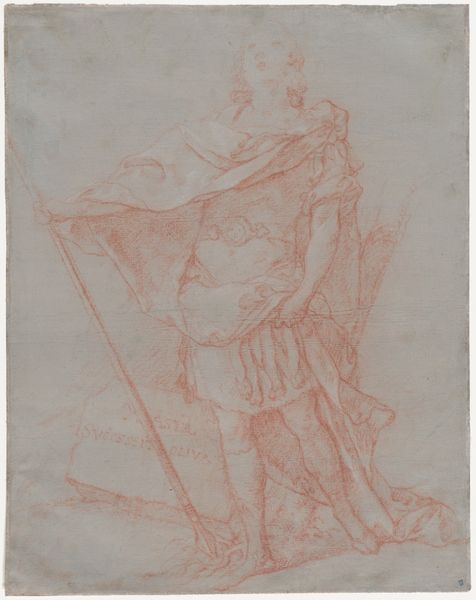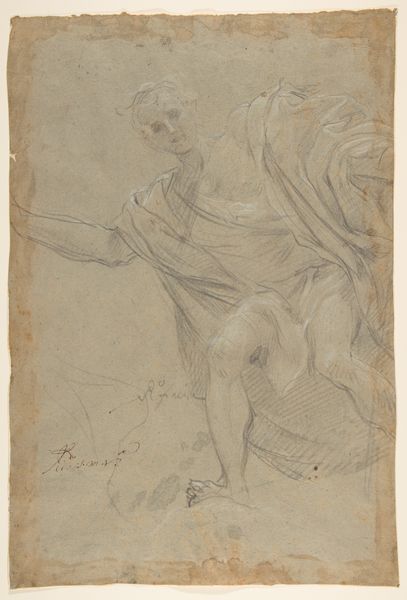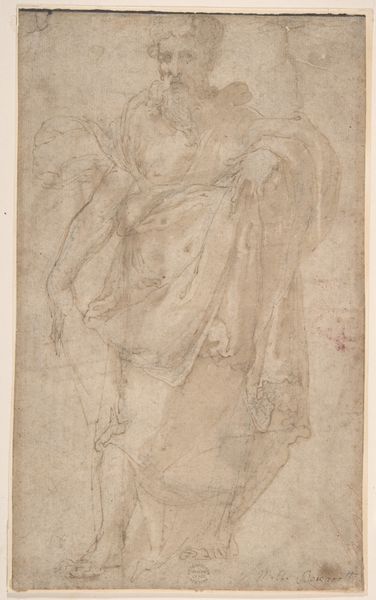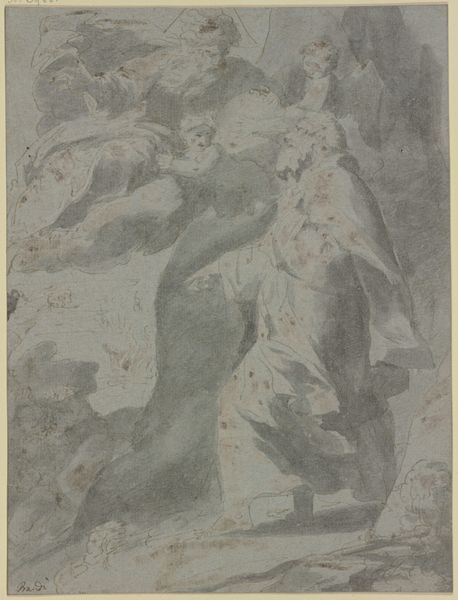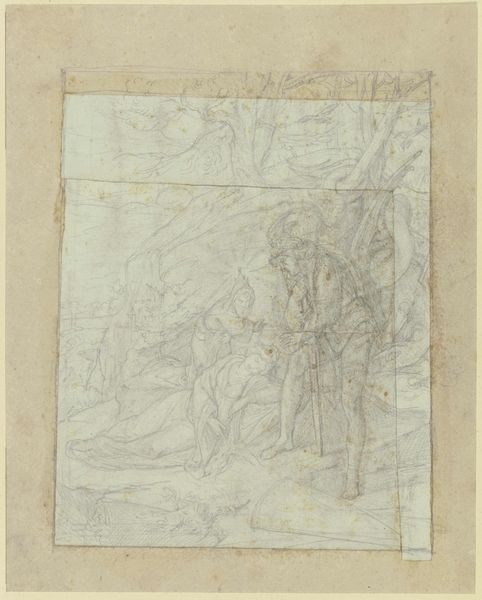
drawing, pencil
#
portrait
#
drawing
#
16_19th-century
#
figuration
#
pencil
Copyright: Public Domain
Curator: The work before us is entitled "Heiliger Sebastian am Baume," an arresting drawing rendered in pencil. Editor: Arresting is right. There’s an immediate sense of pathos, of resigned suffering in that slumped figure. The sketchy quality only amplifies the vulnerability, somehow. Curator: Alois Johann Penz is credited with creating this figural drawing; let's delve a bit into its possible cultural contexts. This artwork resides here at the Städel Museum, a German institution displaying and celebrating artworks within Germany, reflecting how national culture embraces imagery of universal ideas such as martyrdom. Editor: And Saint Sebastian, specifically, is so charged, isn't he? Beyond the literal suffering of a martyr, Sebastian embodies resilience. He survives the arrows! His iconography represents strength found in vulnerability, doesn't it? Consider that open chest, which visually connects the viewer to the subject. He has such a raw emotional affect. Curator: Precisely! His story becomes a potent visual for those who suffer injustice. The museum becomes not merely a container but also a stage upon which collective trauma is addressed. Further, consider that depictions of Sebastian often occur during plague outbreaks. Editor: It’s that layering that gets me—Sebastian representing the resilience of the human spirit against seemingly insurmountable odds, and in Germany he often figures as a cultural image that ties religious, national, and emotional imagery together. You mentioned injustices – the placement and care shown to such artworks reveals broader attitudes of our relationship with victims or people we judge unfairly. Curator: Indeed, museums play an active part in either furthering harmful social tendencies or in righting injustices via displaying and taking seriously art that humanizes those historically rejected by societies. Editor: The endurance of certain images reveals the endurance of cultural memory and continuing concerns, it seems. This depiction speaks poignantly about enduring, no matter how the world changes. Curator: A deeply relevant reflection for understanding the impact of a centuries-old drawing to new audiences and contemporary problems.
Comments
No comments
Be the first to comment and join the conversation on the ultimate creative platform.

